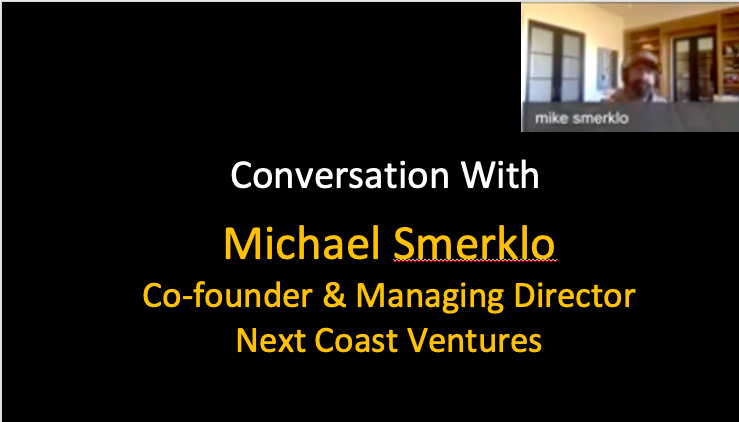Seed Capital
1Mby1M Virtual Accelerator Investor Forum: With Tim Guleri, Managing Director at Sierra Ventures 2021 (Part 6)
Tim Guleri: Second, we are a hungry partnership. We have a large network of friends in the ecosystem boomerang entrepreneurs to us. We have a young team of investors that are active in the ecosystem by market. For instance, we have a person that is dedicated to the Midwest region to reach out to B2B entrepreneurs.
We have somebody covering Canada and Israel, for example. The way those guys work is, they will partner with the local venture firms and make sure that they know us and we know them. There is a bit of a ground game involved.
>>>1Mby1M Virtual Accelerator Investor Forum: With Tim Guleri, Managing Director at Sierra Ventures 2021 (Part 5)
Tim Guleri: Point number one is that it would be hard. It takes too much capital. The second is data. For AI to succeed in any domain whether you are building a horizontal platform or bespoke AI for a particular application set, you have a lot of data to train these models.
Data tends to collect in these massive PaaS platforms. If you have a view that data is necessary at scale to train an AI that you are putting into the market, it again brings you back to the big three or four. I know the folks at C3 really well.
>>>Best of Bootstrapping: A View into Pre-Seed Funding with Gaurav Jain, Afore Capital

If you have been bootstrapping and think you are ready for investors, you need to learn how investors think. First, please study our free Bootstrapping course and Investor Introductions page. Then start looking for entrepreneur – investor fit. Today I introduce you to Gaurav Jain.
Gaurav Jain is Managing Partner at Afore Capital, a firm focused on pre-seed investments. This is an excellent conversation for entrepreneurs looking for insights into pre-seed. You can listen to the podcast interview here and the entire roundtable program here:
1Mby1M Virtual Accelerator Investor Forum: With Tim Guleri, Managing Director at Sierra Ventures 2021 (Part 4)
Sramana Mitra: I was thinking about some of the work that we are doing right now around PaaS which is also a distribution innovation. One of the reasons why Salesforce has been successful as it has been is because it managed to do SaaS products but they also did this PaaS strategy early on.
They got traction on that and built traction on top of their platforms like Veeva and Velocity. I am curious to hear what you are seeing in your orbit of other companies pursuing this strategy.
>>>1Mby1M Virtual Accelerator Investor Forum: With Tim Guleri, Managing Director at Sierra Ventures 2021 (Part 3)
Sramana Mitra: Let’s do a few case studies. You have developed a very informed perspective on this. Walk us through a couple of examples of what they came to you with and what you saw. What was the business model or distribution model that made them successful?
Tim Guleri: The easiest example to give you that your audience will also understand are companies that have an open source genesis. I invested in a company called Sourcefire, which was my second investment in Sierra. This company was based in Washington DC in the security space.
>>>1Mby1M Virtual Accelerator Investor Forum: With Laurel Touby, Managing Director at Supernode Ventures 2021 (Part 3)
Sramana Mitra: One of the big successes of Latin America is Mercado Libre. They were my clients when I was consulting many years ago. I have known them for a long time. That company was a team from Stanford, so they knew how to raise venture capital.
In the early stages, Mercado Libre was rather difficult because the market was not developing. It took much longer to develop. They managed to survive that early-stage period without going under because of their expertise in navigating the venture capital universe.
>>>527th Roundtable Recording on April 22, 2021: With Michael Smerklo, Next Coast Ventures
In case you missed it, you can listen to the recording here:
Roundtable Recap: April 22 – Investors Should Take Solo Founders More Seriously

During this week’s roundtable, we had as our guest Michael Smerklo, Co-founder and Managing Director at Next Coast Ventures. We had a terrific conversation about a range of issues including solo founders and their ill treatment by VCs.
We also had a conversation with entrepreneurs Jill and Rick Howard, who have just joined the 1Mby1M Premium program.
You can listen to the recording of this roundtable here:
